The Siberian Husky is an arctic breed originally used as sled dogs. In this big guide to Siberian Huskies, you’ll find everything you ever wanted to know about the Husky breed. We have facts, fun, photos and videos of gorgeous Huskies. Together with tips to help you find and care for your very own Husky dog.
Contents
- Siberian Husky FAQs
- Husky History & Origins
- Husky Temperament
- Husky Training And Care
- Rescuing a Siberian Husky
- Finding a Siberian Husky puppy
- Pros And Cons Of Siberian Huskies
Siberian Husky Origins
Also known as the Arctic Husky, the Siberian Husky is a member of the Working group of dogs. As you would expect, the breed is originally from Siberia, where it has a rich and established history of living and working with humans.
Siberian Huskies have been bred over a period of thousands of years as a hunting, travelling and living companion to the semi-nomadic Chukchi people. The Husky was first exported to Alaska and Canada in 1908 to be used as sled dogs.
Siberian Husky Popularity Growth
These imported Huskies were initially mocked for being much smaller and less heavy than the current sled dogs. But were rapidly recognized as the strong and effective runners that they are.
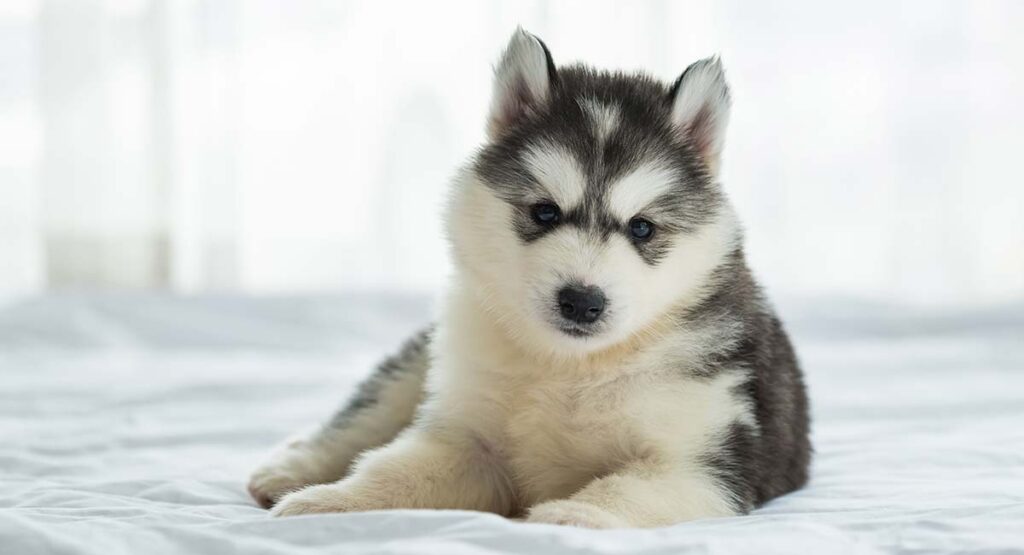
Within just a handful of years these powerful dogs were competing regularly and winning prizes, and held in high regard in sledding circles. They ranged for huge distances, and were by far the lightest and fastest of the sled dog breeds.
It wasn’t until the early 1940’s that they made their way as far as the United Kingdom, becoming well established as a breed here some twenty years later in the 1960’s.
The Modern Siberian Husky
Until the 1990’s Huskies in the UK were bred predominantly by a dedicated core of breeders, who intended to keep them as kind, communal, healthy pet, working and show companions.
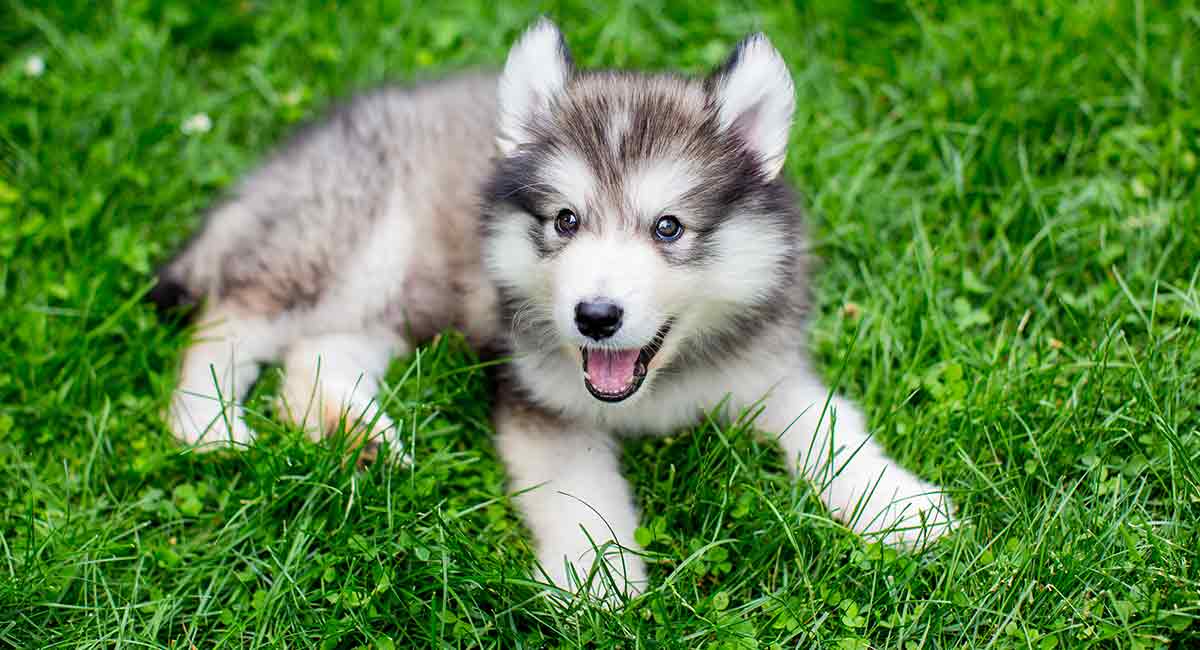
However, in recent years there has been a shift in this pattern as they have grown hugely in popularity, and breeders with different standards and goals have risen up to take on this demand. Huskies you will see today are therefore more varied in type and temperament to those just a few years ago. Although they generally retain the distinctive wolf-like appearance that we are familiar with.
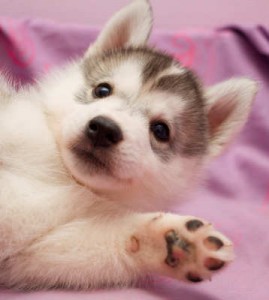
Quick Stats: The Siberian Husky
| Popularity | 14th most popular breed in the USA |
| Purpose | Originally sled dogs, most today are companions |
| Weight | 40 to 60lbs |
| Height | Up to 24 inches |
| Temperament | Social, friendly, playful. Enjoy being with other dogs. |
| Cost | $1,000 to $2500 |
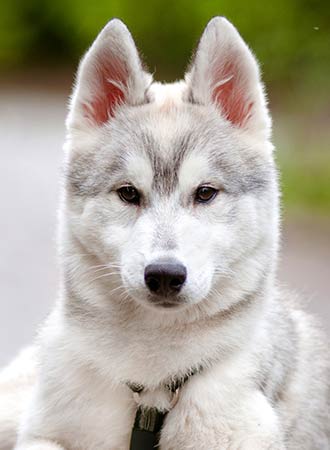
Siberian Husky FAQs
Check out some of our readers most frequently asked questions in the quick links below:
- Are Siberian Huskies good family dogs?
- How easy is it to train a Siberian Husky?
- Do Huskies get lonely?
- How much exercise does a Siberian Husky need?
- Can Huskies live with cats?
- Do Siberian Huskies make good family pets
Fun Facts about Siberian Huskies
In 1925 the Siberian Husky really came into prominence in a larger scale, when a team of dogs pulled a sled carrying life saving diptheria serum for over 600 miles to bring it to a population in need.
From this point they were exported further into Canada and America, touring the countries and demonstrating their racing prowess.
So Huskies even have a history of saving lives! They’re such popular dogs, you can see tons of celebrities that own them!
The list includes: Rita Ora, Jared Leto, Ben Stiller and Taylor Lautner!
Siberian Husky Appearance
The Siberian Husky is very wolf-like in appearance. With the proportions and features that defined their ancestors, like erect ears, balanced proportions and a bottle brush tail still very much evident.
Built for endurance and speed, they are rarely heavy set. You’ll see them moving with grace and fluidity.
They had to be strong to pull sleds for long distances, and be very fit to continue to do so for hours at a time.
Husky Coat
Perhaps the most prominent feature of the Husky is his coat.
Husky fur colors are unusual in terms of the accepted range of shades.
The Kennel Club state that ‘all colors and marking, including white’ are allowed. This is not something you see on most dog breed standard descriptions, and is a fitting tribute to the fabulous range of husky hues that you can find. From palest white to dark brown, to a combination of all the shades in between.
Their fur is spread across their bodies in a thick and lush double coat, of medium length. The individual hairs should be straight and smooth, and feel soft to the touch.
Adult Size
Male Siberian huskies in general grow to be larger and heavier set than their female counterparts. With the average dog being around 50lb and the average female dog around 40lb when fully grown.
You can expect your male husky to grow up to 60cm in height, with female dogs just a little shorter at a maximum of about 56cm according to the English Kennel Club standard.
Huskies can be made a lot smaller, but this can come with some increased health issues.
Siberian Husky Temperament
Siberian Huskies have a reputation for being as cold as the climate they come from, but this is definitely not true. Whilst they are certainly not clingy dogs physically, they find it essential to be around their canine and human families.
They love to be in company, and will quickly become upset if left alone for lomg periods of time.
Are Huskies Friendly?
Huskies can be said to be reserved in nature, but they are certainly not suspicious. They have no guarding background, and are generally accepting of other dogs and humans like.
They will not guard your house for you, but likewise they won’t make your guests feel unwelcome either.
Don’t mistake their kindness to strangers as a lack of loyalty and love for their pack, this communal nature is a huge bonus in a pet dog and something to be treasured. It doesn’t devalue their love for you, rather adds to it.
They are also incredibly playful, loving to work off their excessive energy by bouncing around.
Do They Get On With Other Dogs?
The classic image of the husky pulling a sled with his friends will tell you that they are generally good with other dogs. In fact, they are rarely happier than when in the company of their fellows.
However, this doesn’t mean that they will tolerate another dog challenging them. They might not start a fight with another dog, but if another dog picks one with them they will probably end it.
It is therefore a good idea to shy away from very small ‘mouthy’ dogs you encounter when out with your Husky, for the safety of the feisty little one.
Can They Live With Cats?
If a Husky has lived with a cat from day one, then they will probably continue to accept them as a part of their home. However, it would be preferable not to give them the opportunity to test this theory.
As a breed they are very prey driven, and have been known to kill cats as well as other rodent pets. Won’t just chase then or annoy them, they will often catch and kill too. This is probably as a result of having been allowed for generations in Siberia to catch their own dinner.
It is therefore not recommended to run the risk, and if you have a cat to look into other breed options for the time being.
Are Huskies Good with Children?
Siberian Huskies are renowned for being good with children. For hundreds of years they were kept as working and living companions by the Chukchi people, who worked with them but also lived with them in very close quarters.
The likelihood is that any bad behavior to the children they resided with was not tolerated, and therefore the dogs who were allowed to continue on to produce new puppies were only those who were happy to be subjected to children’s unpredictable behaviors.
This probably contributes to to the fact that Huskies have no guarding instincts, and are at home in the company of people of any age.
To their credit they also make it known when they are unhappy, so give clear signals to their families to enable them to desist unwanted behavior before it gets out of hand.
But Remember
Do remember though, that even the nicest dog is still a dog. Children should never be allowed to antagonise or harass dogs, and should always be supervised in their company.
The use of a crate to give the dog the ability to have his own space and place to escape to will help to keep him from being unduly upset.
The other reason to supervise their activities together is that huskies are very playful and bouncy dogs. Small children can be accidentally knocked over and bumped about by their large, fluffy playmates.
Do Huskies Bark a Lot?
Huskies are very vocal, although they couldn’t be said to bark a lot. They are not a naturally yappy or bark-crazy breed in the manner of terriers for example. They are much more like members of the hound family, with a tendency to howl.
Not only do they look a lot like the wolves of their ancient past, but they sound exactly like them to. A haunting and drawn out noise, it is not to everyone’s liking. Especially when continued over long periods of time or at unsocial hours of the night.
If you have more than one can also have a tendency to howl communally. This response can also be triggered by sirens, which not ideal for busy city center living.
If you have close neighbours or live in a built up area, your growing Husky could cause you to have problems with those living close by. They are better suited to more remote locations for this reason.
Training your Siberian Husky
The Siberian Husky is not known for their co-operative intelligence, at least not in the way we would assess it in human terms. This is because they have not been bred to follow complex instructions and work with humans in the same way that sheepdogs or gundogs have.
This by no means implies that they are stupid or incapable of learning, especially with modern reinforcement training techniques. They are simply motivated by different things, namely their prey drive and need to run.
Dominance theory is outdated now, so you will be pleased to hear that there is no need to make your sweet natured Husky think you rule the roost. They are also incredibly hardy dogs, so punishment even if you prefer it as a methodology would still not be appropriate for this breed.
Best Training Methods
They will do best with consistent positive reinforcement training from the day they arrive home with you, to help them see you as a brilliant source of very tasty food and super fun games.
Training in a fully enclosed area is essential for Husky owners, as is starting from day one and setting good habits in place with positive reinforcement training.
Even the lively and independent husky will have a dependant phase as a young pup. It is essential that you make the most of these early days and weeks to set great foundations for future obedience. Especially in terms of recall.
Clicker heel work and recall training should be your priorities to keep your future outings together less stressful.
Exercising a Siberian Husky
An important consideration for a potential Husky owner, perhaps the single most important one, is their need for exercise.
They have a deeply imbedded desperation and need to run. These dogs are marathon runners, not sprinters. They need an awful lot of steady paced exercise. Perhaps up to two hours every single day.
If you are a keep jogger, biker or hiker, your Husky will delight in keeping you company on extended tips outside. They also love being worked in the manner of their ancestors, pulling sleds in gangs and racing.
Despite his love of exercise, another tricky aspect of Husky care is his inclination to run off when out and about. You will need to go to great lengths to keep him safe, in a way that you wouldn’t necessarily need to bother with another breed of dog.
Best Way to Exercise an Adult Husky
The Siberian Husky has an incredibly high prey drive, this means that unless he has a rock solid recall he is likely to lose sight of you on a regular walk off-lead.
Harness and line are advised by many breeders as off-lead as a full grown husky will tend to roam or run away chasing the wildlife. They have a strong instinct to run and to not just pursue but kill prey animals.
Unfortunately, Huskies are bred to run and pull. This means that they are not the easiest animal to have on a lead either. A harness is therefore essential not only to prevent your dog choking himself on a collar, but to help you maintain control.
Importance of Recall Training
Whilst training a good recall with a husky will be hard due to his natural impulses, it is something that you will benefit hugely from committing to and is by no means an impossible dream.
But it will need to be intensely proofed throughout the first months and possibly even years of the lives, and even then it would not be wise to let them off leash in an area where there is a chance of wildlife or local cats poking their heads up for a look.
It is also tough to teach a recall as the Husky loves running so much, making this more rewarding to him than any treat you might have in your pocket to offer him.
The safest way to exercise a Husky is in an enclosed space, potentially with other well-behaved dogs for company.
Siberian Husky Health and Care
When compared to some breeds of dog, Siberian Huskies are rather healthy, often living into their mid-teens.
However, there are some common Husky health issues that can impact this breed. You will need to understand what they are and how best to lower the odds of your puppy growing to suffer from them before you choose him.
Let’s take a look.
Eye Problems
Eye problems are sadly not uncommon in the Siberian Husky breed, and estimates come in at around 10% of them being affected in some way.
These eye diseases come in several different forms, so it’s important to be aware of each one and what you can do to reduce the chances of your new puppy being affected.
Uveodermatologic Syndrome
Vogt-Kyoanagi-Harada, also known as uveodermatologic syndrome. This is a nasty condition that frequently recurs and often results in blindness. Symptoms include red painful eyes, skin pigmentation and whitening of the hair.
Cataracts
Thought to affect 10% of the breed, cataracts are of concern to husky enthusiasts.
Research is currently being carried out to discover more about their prevalence in this breed, and it is hoped that a DNA test will be available for breeders to use in the future. However, at the moment you will need to ask your breeder whether there is a history of them in your pup’s parents lines.
Progressive Retinal Atrophy
Progressive retinal atrophy is a common issue amongst pedigree dogs of any breed, and is seen in huskies. Fortunately, the Optigen test is available, which wil tell you whether your puppy’s parents are affected.
Make sure both parents have been shown to be Optigen clear before agreeing to your new pup to ensure that he will not become blind as a result of PRA.
And More…
Entropion and corneal dystrophy although less common can also impact upon the Siberian Husky’s health.
As you can see, eye problems are a serious matter for this breed. There have been attempts over a couple of periods in the past for eye registries to be set up to address this problem, both for the general dog population and for Siberian Huskies specifically.
If you are purchasing a puppy, you can ask the breeder to provide evidence their dogs are SHOR or CERF registered. These lists require dogs to have been eye tested and therefore give you a reduced chance of having an affected puppy from their progeny.
Skin Problems
Skin problems in Huskies are fairly common too. With two main culprits, follicular dysplasia and the results of zinc deficiency.
Follicular Dysplasia causes patches of hair loss and scaly sore skin. Genetic condition that can be treated with medicated shampoos, but cannot be cured. Usually displayed signs from four months onwards.
Zinc deficiency is a big problem for some Huskies. Their original diet was very high in fish and fat. The lack of zinc in modern diets can cause a condition known as zinc responsive dermatitis. Where the low levels result in itching and fur loss. Fortunately, this is easily treated by your vet, with a zinc additive.
Hearing Problems
Deafness can be a factor for Husky owners. Although this is not life-threatening, it is an inconvenience for your dog and you as an owner and therefore best avoided.
Deafness in dogs is often associated with the white pigment in their fur, therefore white Huskies are more likely to be affected with this condition.
This variety of deafness is normally apparent from the time the pup’s ear canals are open at a few weeks old.
Hip Dysplasia
For a larger breed of the dog, the Siberian Husky is refreshingly low in terms of hip dysplasia. Possibly due to their being bred as running dogs, and therefore natural selection allowing the breeding of those with good joints in their early days.
This does not mean that potential buyers need not worry though, as your husky will love to exercise so much he will need to be in excellent health. Make sure you see the hip certificates of both parents before you purchase a puppy regardless.
Other Common Problems
Other generalised health issues affecting the breed include Hypothyroidism, Bloat and Haemophilia. All of which a Husky has an elevated chance of suffering from.
Any condition that a Husky may suffer from should have been considered by your breeder. Ensure that any health tests which could potentially be carried out have been.
Any conditions that there are no tests for should be discussed, with reference to the pups parents, grandparents and ideally great-grandparents too.
Your breeder should appear open and honest on all counts, and demonstrate that they have actively tried to breed only from healthy examples of these wonderful dogs.
General Care
Although Huskies are not notorious picky eaters, you will need to give careful consideration to their dietary needs. This will reduce the chance of them suffering from zinc deficiency as mentioned above, as well as catering to their established digestive systems.
High cereal or carbohydrate content in kibble is not recommended for Siberian Huskies.
You can also help to reduce the chances of your puppy suffering by feeding him on a higher protein diet, with oily fish.
Raw food diet with a generous quantity of fish would suit most Huskies best. A purely raw diet high in fish is ideal for this breed.
Grooming Requirements
The Siberian Husky is not difficult to groom. Their coat is medium length, and although it looks very fluffy it is actually easy to manage.
Twice a week brushing will suffice to keep it looking great, although you may choose to do so more often to decrease the amount of fur they shed in your home.
Huskies moult all year round, but excessively shed twice a year in Spring and Autumn.
Lots of excess hair will be spread around your house, however careful you are.
A good vacuum cleaner that is specifically designed with pet hair removal in mind is vital.
You can use this and regular outdoor grooming of your Siberian Husky to stay on top of the shed fur situation.
Do Siberian Huskies make Good Family Pets?
Siberian Huskies can make fabulous pets in the right homes. But they are not a perfect fit for every family, as they have some unusual requirements.
To be the right home for a Husky, you need to have a lot of free time. Both to dedicate to training and to exercising this high drive dog.
The house itself does not need to be massive, although you do need to have space for a large dog and his wagging tail to relax and pad about. An enclosed garden however, is essential.
Things to Remember
Siberian Huskies are notorious escape artists. They love digging and can jump very high. You will need a six foot fence at least, with at least a few inches of foundation under the ground.
You will preferably have no close neighbours, or ones who are very tolerant when it comes to howling.
Your dog will also run a lot, so if you are garden-proud you will need a dedicated area for your husky to exercise, with a secured section for your treasured plants to avoid a daily trampling.
A sandpit for them to dig in would be a great addition.
What if I Work Full Time?
Combining any puppy and full time work is tough going without taking time off or employing help for several weeks. With a Husky, this issue is magnified.
They love company, and become miserable and bored when left alone for hours This will inevitably lead to destructive behavior and howling. Not great for your home or your neighbours.
Ways to Combat This
If you work full time and have your heart set on a Husky puppy you will need to make arrangements for full time doggy day care. Either at a doggy day care center or with a family member who is happy to look after them whilst you are out. Unfortunately, a dog walker calling in once a day will probably not suffice given his great need for companionship.
On the bright side, any relative who agrees to spend the day with them should be in very easy and fun company, as long as you have given them a good walk before dropping them off.
If you are confident given what you have read above that you have the time, space, and situation appropriate for a Husky then the next thing you need to do is make sure you pick the right puppy.
Rescuing a Siberian Husky
If you’re not fussed about getting a puppy, consider rescue dogs. This is a great way at giving a Siberian Husky a second chance at a great home.
Plus, rescue centers will normally be able to give you a bit more information about the personality of the dog you’re welcoming home.
Click here to jump to our list of Husky rescue societies.
Finding a Siberian Husky Puppy
In the past ten years the popularity of the Siberian Husky has soured and as a result a lot of unethical or misguided people have begun to breed them.
It is vital that you pick your puppy from a breeder who is interested in the continued health of the breed and not just looking to make money.
How to Spot a Reputable Breeder
The right husky breeder will ask you a lot of questions. They will seem very nosey, asking about your personal situation. Where you live, how you will devote time and energy to your puppy in the early days and throughout his life.
They will want to assure themselves that you are the right home for their precious puppy. Please don’t be put off if they seem intrusive, this is actually a really good sign in a breeder.
They will probably not breed any other types of dogs. If they have several litters from different breeds, especially those from different groups of dogs (toy dogs, for example), they might not be the right breeder for you. Take a look at this article for how to spot a puppy farm, because they are not as easy to pick out as you might think.
Finding a Healthy Puppy
A good breeder should be open and clear about the dog’s parentage, providing you with certificates to back up their health testing claims. The dog should be a part of the family and have a purpose in their lives beyond making puppies.
The mother of the pups should be quiet and confident. She won’t necessarily want to smother you in kisses, but she should seem at ease in the company of strangers and have a relaxed demeanour as well as a healthy appearance.
Siberian Husky Cost
Do not pick the cheapest Siberian Husky puppy. Remember, the majority of their cost to you will in fact come over the next 15 years or so of their lives, in terms of insurance, feeding and equipment.
A good breeder will have carried out all the relevant health tests, which do not come cheaply. You will probably pay between, depending upon where in the country you are.
Raising a Siberian Husky Puppy
Caring for a vulnerable Siberian Husky puppy is a big responsibility. There are some great guides to help you with all aspects of puppy care and training.
You’ll find them listed on our puppy care page.
Popular Siberian Husky Breed Mixes
If you are looking for a Siberian Husky puppy, then you will probably come across numerous adverts for Siberian Husky Mix puppies.
Buying a mix breed puppy is not necessarily a bad thing. Cross bred dogs in general live longer, and it is good for the general gene pool of pet dogs that mixes between pure breeds occur.
This said, make sure the breeder is crossing two dogs together for the right reasons.
Both parents should still be fully health tested for any conditions that might affect their breed. You as a puppy buyer should be aware that when buying a mix breed puppy they could inherit physical and temperament characteristics from either parent breed. Make sure that you meet both parents before committing to your puppy.
Take a Look at our Guides
We’ve got some great guides to Husky mixes below. Take a look at a few of them to see if a Husky mix could be right for you.
- Huskimo – The Siberian Husky And American Eskimo Mix
- Pitbull Husky Mix
- Golden Retriever Husky Mix
- German Shepherd Husky Mix
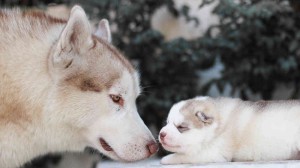
Comparing the Siberian Husky with Other Breeds
If you’ve ever wondered how a Siberian Husky really compares with other breeds of dog, we’ve got guides to help with that too!
Similar Breeds
Now we’ve looked at everything to do with the Siberian Husky, you might be unsure if it’s right for you.
If you’re still on the fence, you might want to take a look at some of these similar breeds to see if they would be better suited to your family:
- Alaskan Klee Kai
- German Shepherd
- Icelandic Sheepdog
- Wirehaired Pointing Griffon
Pros And Cons of Getting A Siberian Husky
Let’s recap all of the pros and cons of the Siberian Husky breed.
Cons
Huskies are loud breeds that like to ‘talk’ to their families.
They cannot be left alone for long periods of time.
These dogs require a LOT of exercise.
Siberians aren’t suitable for homes with other small pets.
They also have high grooming requirements.
Pros
Huskies are really friendly pets!
They get on well with other dogs and children.
If you’re an active family, they’ll be a great fit.
They aren’t likely to show guarding tendencies to strangers.
Siberian Husky Products and Accessories
Preparing for a puppy is hard enough. But when it’s an energetic, playful Husky puppy, it can seem even harder!
Luckily we’ve got plenty of amazing product guides to help you get the absolute best.
Check them out here.
- Best Food For Husky Puppy Health and Happiness
- Husky Grooming Tools: Top Tips for a Shiny Coat
Siberian Husky Breed Rescues
Here are some breed centers that specialise in Siberian Huskies.
USA
UK
Canada
Australia
If you know of any others, please mention them in the comments so we can add to this list!
And make sure to tell us all about your own Siberian Husky!
References And Resources
- Gough A, Thomas A, O’Neill D. 2018 Breed Predispositions to Disease In Dogs and Cats. Wiley Blackwell
- O’Neill et al. 2013. Longevity and Mortality of Dogs Owned In England. The Veterinary Journal
- Schalamon et al. 2006. Analysis of Dog Bites In Children Who Are Younger Than 17 Years. Pediatrics
- Duffy D et al. Breed differences in canine aggression. Applied Animal Behavior Science 2008
- Strain G. Deafness prevalence and pigmentation and gender associations in dog breeds at risk. The Veterinary Journal 2004
- Adams VJ, et al. 2010. Results of a Survey of UK Purebred Dogs. Journal of Small Animal Practice.
- Siberian Husky Club of America
- Siberian Husky Club of Great Britain
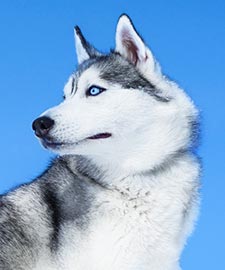
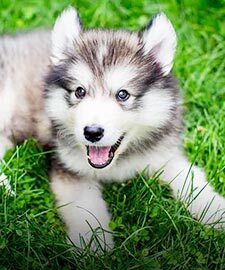
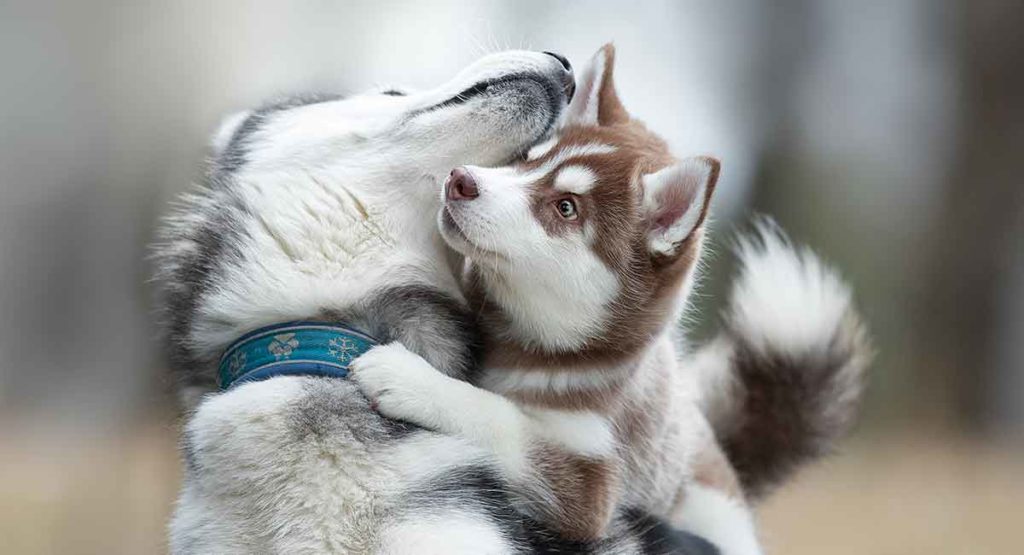
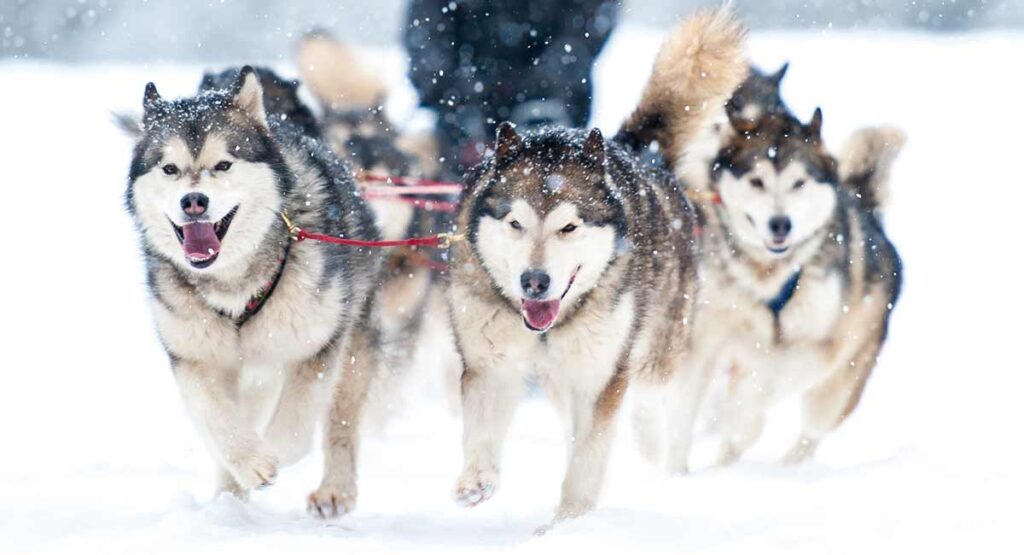
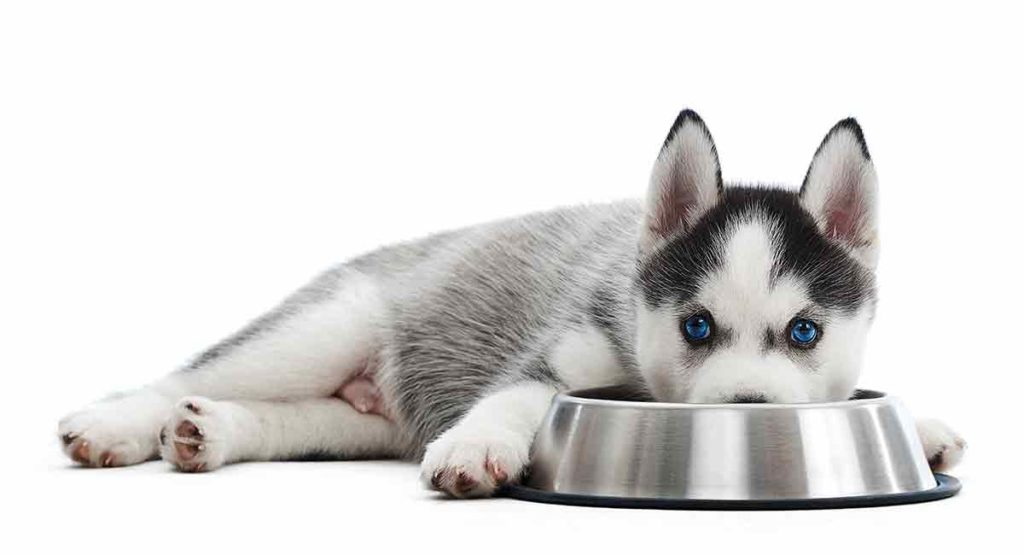
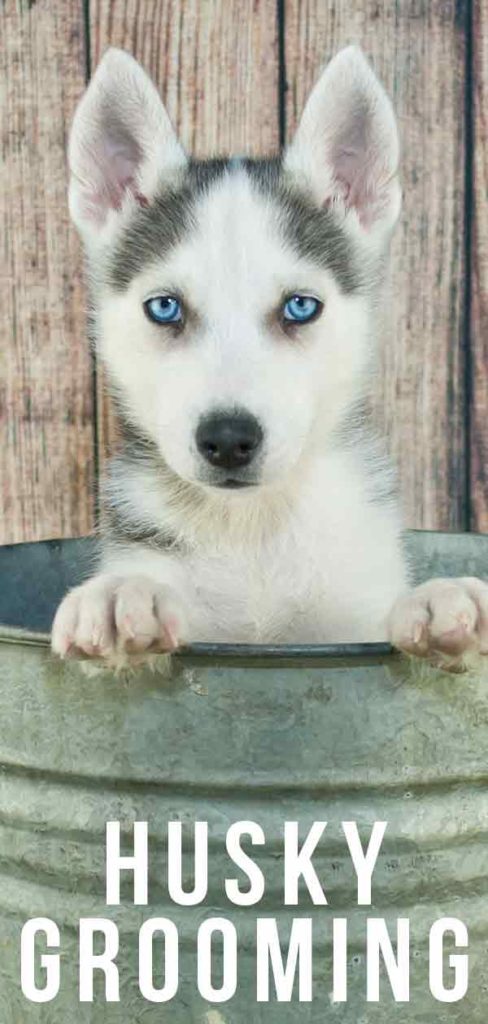
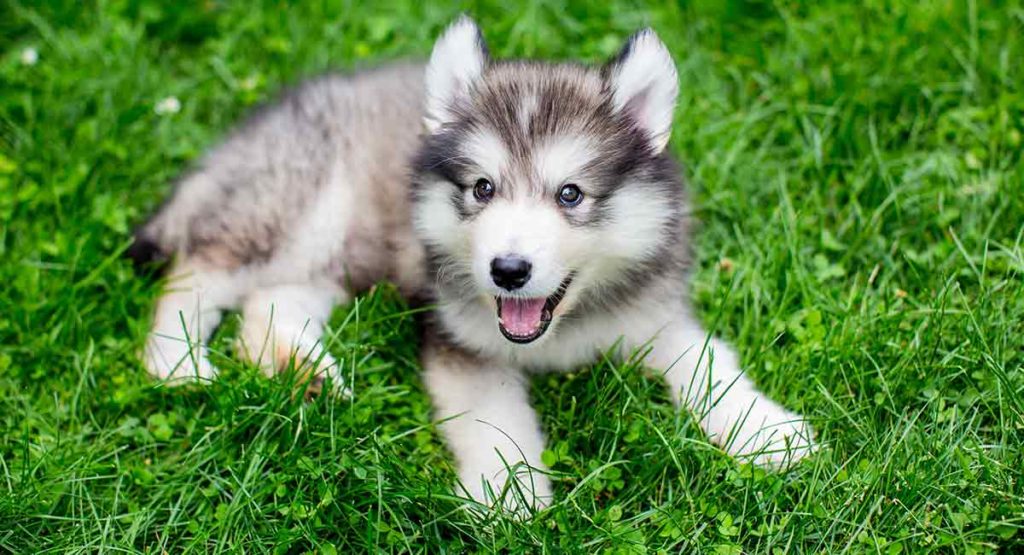
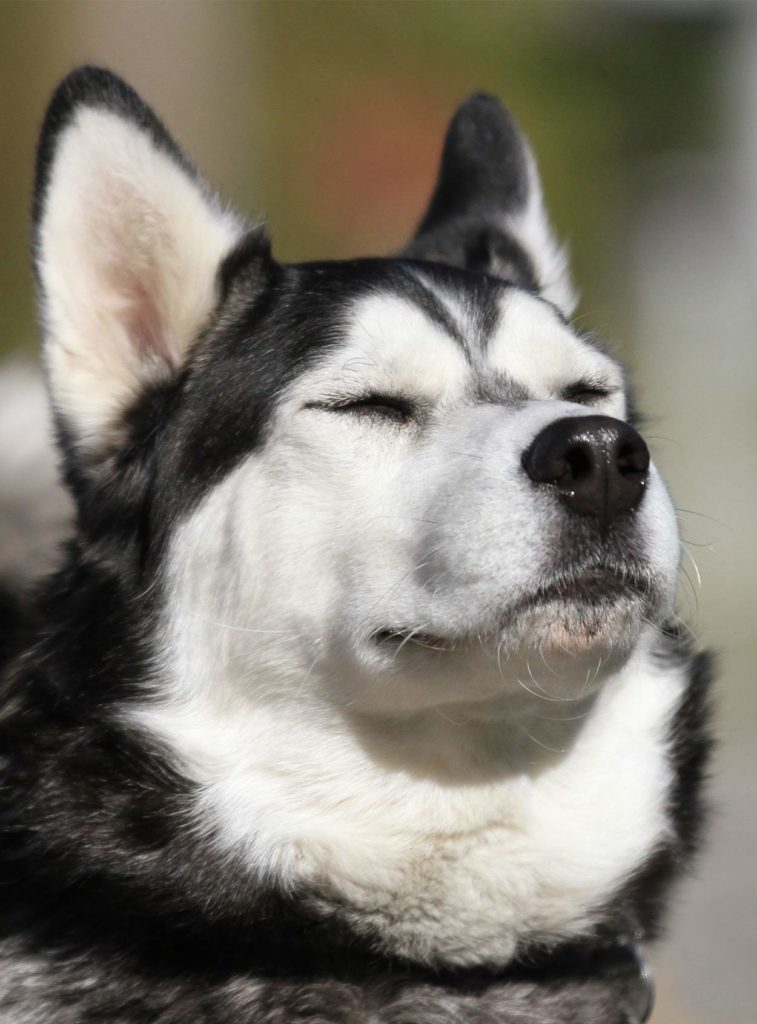
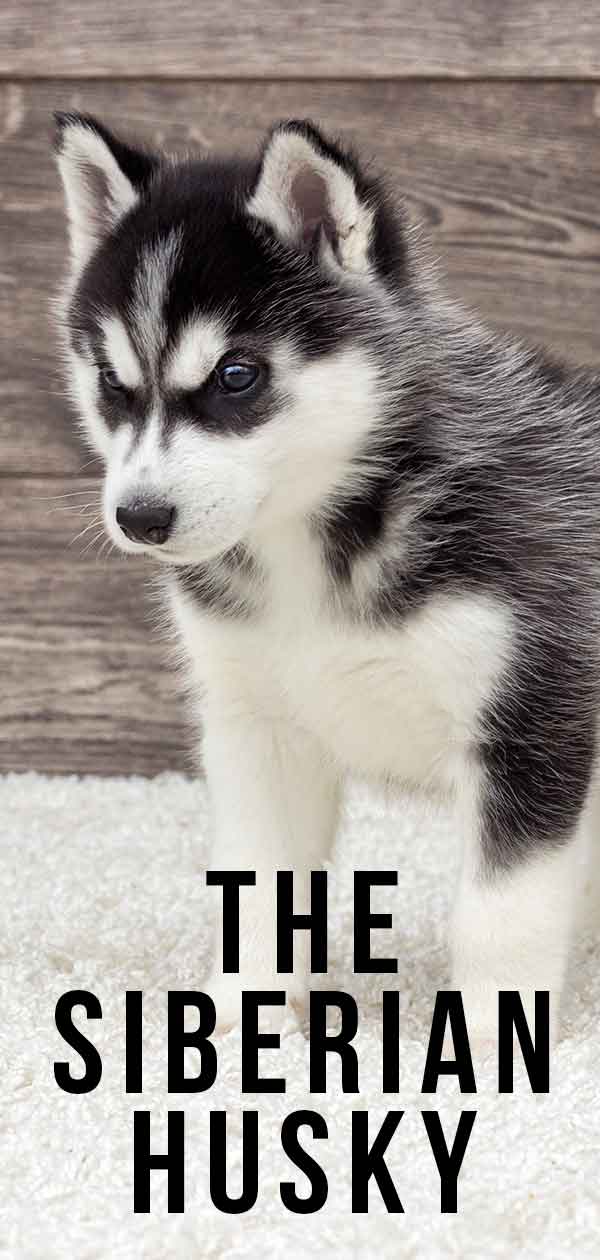
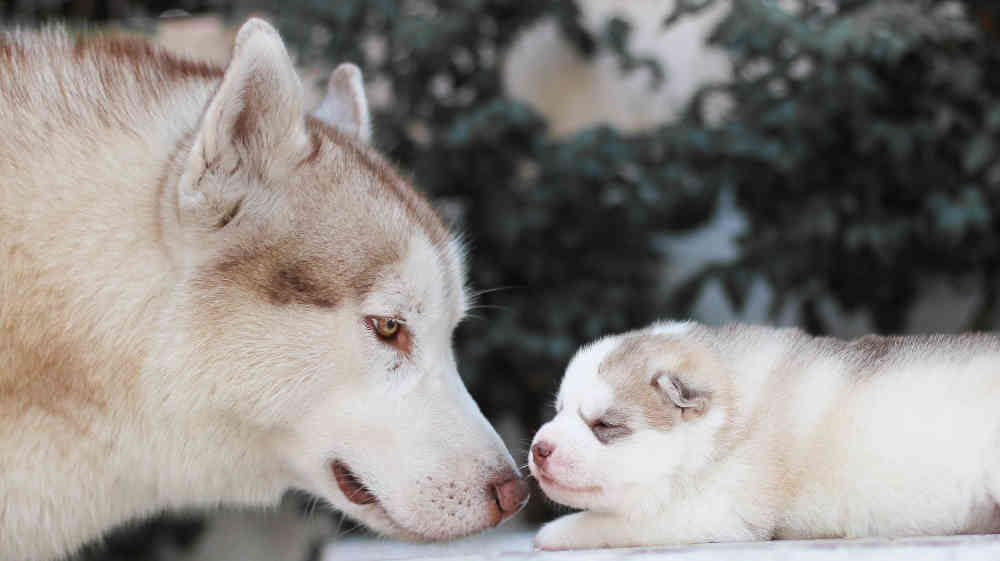
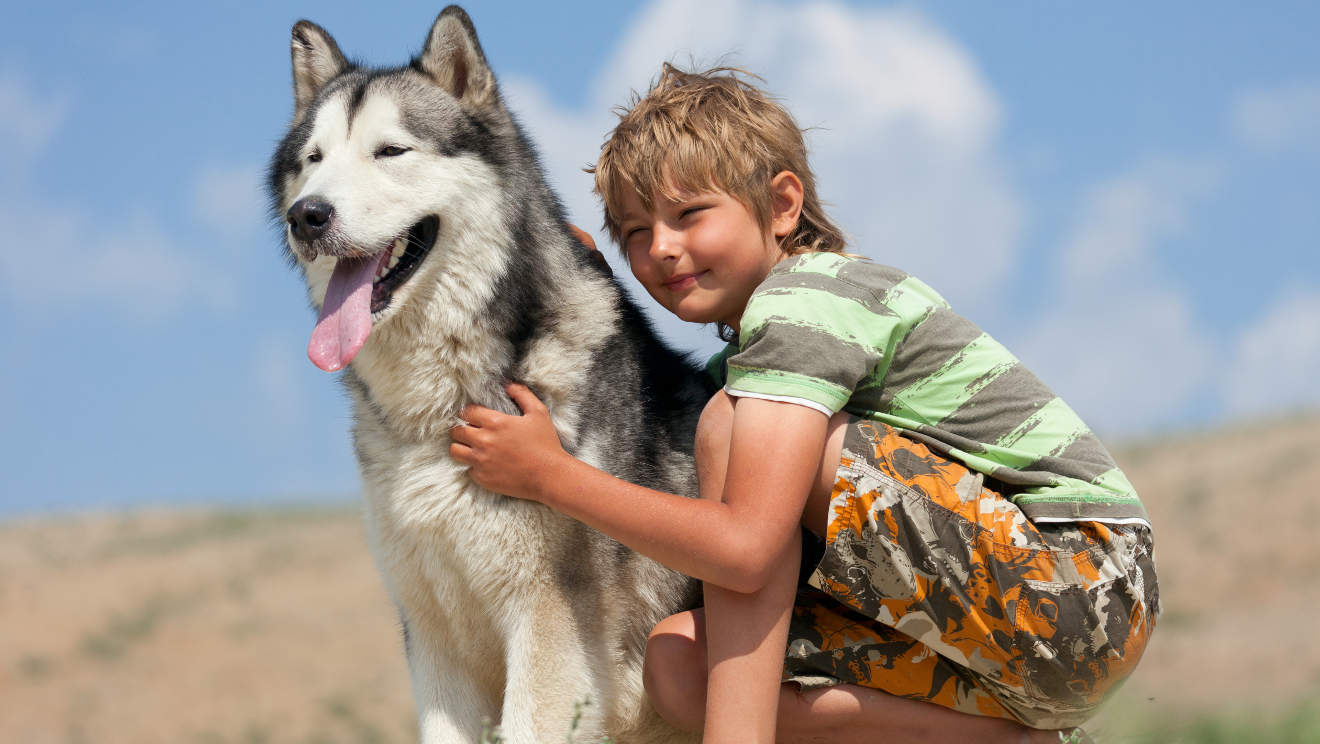
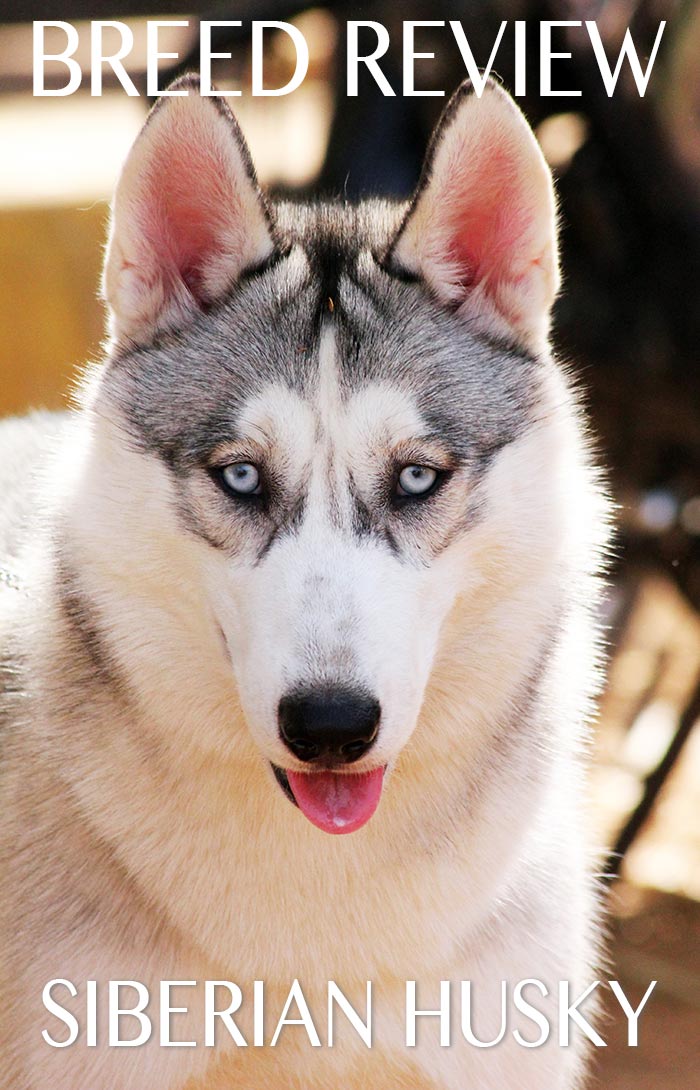
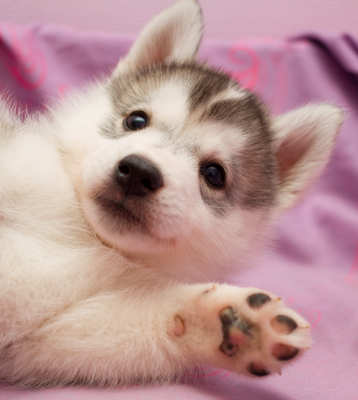

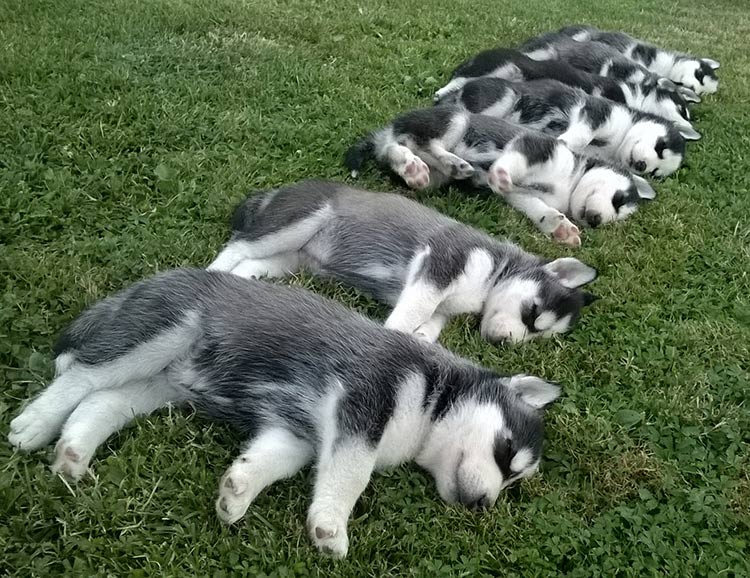
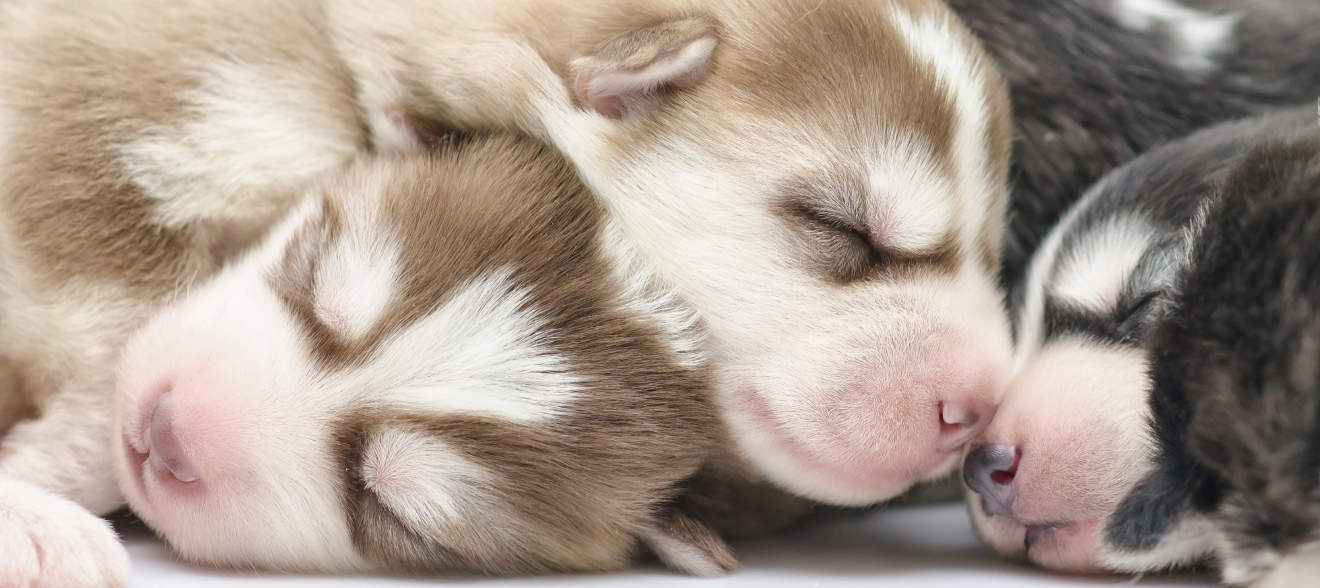
Melanie Hogan says
I love my husky rescue. She was being abused and I got her sound 4 months old. She still doesn’t like men too much. But we have trained her to tolerate them lol. She has one brown eye and one Ice blue with a silver grey coat. She is a ham an loves to talk back lol.
Ann bon dohlen says
I have a 7 month husky mix with wolf he has be come agreddibe and doesn’t respond to commands most of the time .we all try to work with him
But now we think we have falled at trsongong him. What can we do to help him with his training. Thanks ann von dohlen modesto Calif
Melanie Hogan says
Hey Ann husker require total routine. Up the same time every day, feed the same time, let outside every two to three hours. Positive reinforcement works well. When training only teach one trick at a time. Continue the same trick everyday until they can do the trick easy. After about a week to two weeks introduce a new trick along with the old. Sit should probably be the first as it lets you get their attention. But again having a routine is a must.
Luke Yancey says
I love that Siberian Huskies are great with kids. I know they are really hyperactive, so I was a littler nervous that they wouldn’t put up with the randomness of kids. I also appreciate that you mentioned Huskies are better off in larger homes. I currently live in an apartment and should wait until I move into a house to get a one.
Mariana says
I have a husky she’s 3 weeks old and I have a German shepherd that’s 3 weeks old my 3 week old German Shepherd puppy is named Cookie and my 3 week husky is named SugarCookie I hope that’s a good name
Jeannette Ballas says
That was a year ago u have shepherd Huskie pups yet